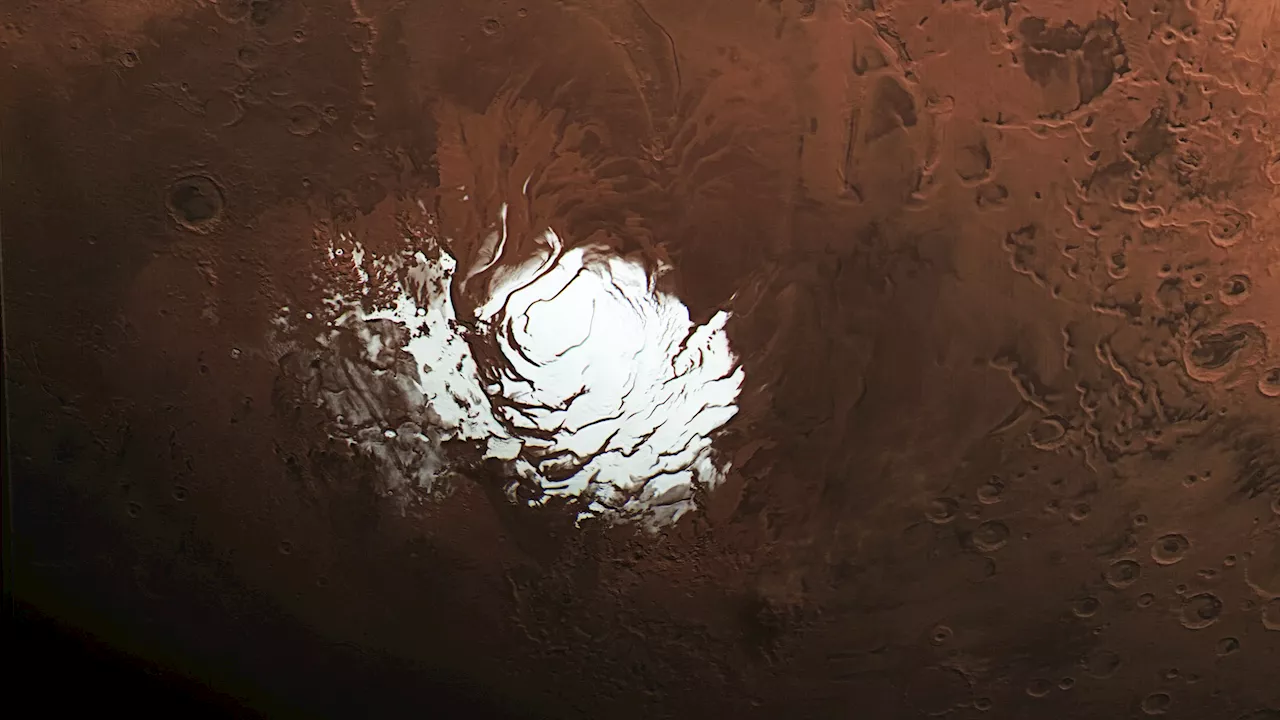URGENT UPDATE: NASA’s Mars Reconnaissance Orbiter (MRO) has just revealed groundbreaking findings regarding a long-standing mystery at Mars’ south pole. Using an innovative radar technique, scientists now conclude that a region previously believed to harbor an underground lake is likely a layer of rock and dust instead.
This significant discovery comes after years of research sparked by earlier signals detected in 2018 by the European Space Agency’s Mars Express. Those signals ignited excitement among scientists, as the potential existence of liquid water on Mars is closely linked to the possibility of life beyond Earth.
On May 26, MRO executed a carefully planned maneuver, rolling 120 degrees to enhance the effectiveness of its Shallow Radar (SHARAD) instrument. This technique allowed for deeper subsurface imaging, ultimately leading to new insights that challenge previous assumptions. Researchers Gareth Morgan and Than Putzig, based in Arizona and Colorado respectively, led the study, which has just been published.
“This map shows the approximate area where in 2018 ESA’s Mars Express detected a signal interpreted as an underground lake,” Morgan stated. “However, our new data suggests that instead of a lake, we are seeing something much less exciting beneath the ice.”
The area under investigation spans approximately 12.5 miles and is buried under nearly 1 mile of ice. Initial radar signals from Mars Express indicated a highly reflective surface, typically associated with liquid water. However, SHARAD’s latest findings present a faint radar signal, suggesting that the subsurface is composed of different materials.
Morgan emphasized the importance of this research: “While this new data won’t settle the debate, it makes it very hard to support the idea of a liquid water lake.” The scientists are now focusing on the unique characteristics of the area, which may include ancient lava flows or other geological formations.
These developments are crucial as they redefine our understanding of Mars’ south polar region, which features an ice cap atop heavily cratered terrain. The implications for future exploration are significant, particularly in the context of human missions to Mars. “If there are resources like ice near the Martian equator, that’s where we’d want to send astronauts,” Putzig noted, highlighting the potential for water resources in warmer regions of Mars.
NASA’s Jet Propulsion Laboratory in Southern California manages the MRO, which has been in operation since 2006. Lockheed Martin Space in Colorado built the orbiter and continues to support its operations. The SHARAD instrument was provided by the Italian Space Agency.
The scientific community is eager to see how this new radar technique will be applied to other regions of Mars, with Medusae Fossae being a primary target. As researchers continue to unravel the secrets of the Red Planet, these findings underscore the ongoing quest for understanding Mars and its potential to host life.
Stay tuned for more updates as this story develops.







